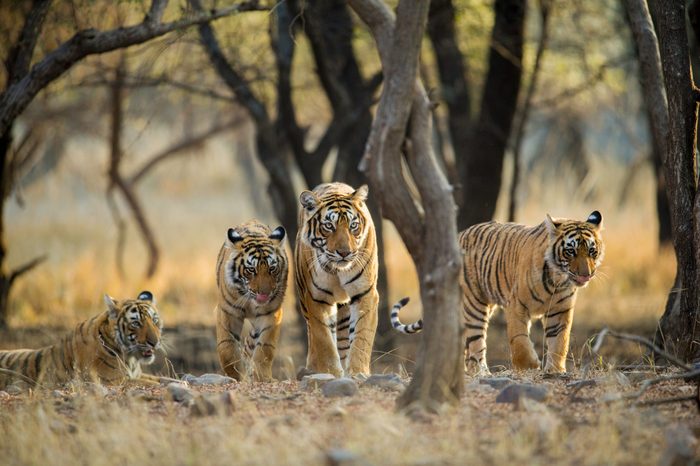
The surviving species
Tigers (Panthera tigris) are the biggest of the world’s cats. They are fierce, solitary animals that hunt across many miles, at speeds of up to 65 miles per hour, for their prey of antelope and wild pigs and can weigh up to 660 pounds.
Before we can answer how many tigers are left in the world, consider how many species are extinct. As recently as 100 years ago, eight subspecies were ubiquitous throughout Asia, according to National Geographic. Today, three of those subspecies—Capsian (Panthera tigris virgata), found from eastern Turkey to western China; Bali (Panthera tigris balica), native to that Indonesian island; and Javan (Panthera tigris sondaica), another hyper-local Indonesia cat—have gone extinct.
The remaining five subspecies have been victims of poaching, what’s known as retaliatory killings, and extreme habitat and hunting range loss that’s down to 7 percent of its original size. Not surprisingly, their populations are all exceedingly vulnerable, with a mere 3,890 still extant in the wild, as the New York Times reported in 2016. The good news: This figure actually represents an increase—up from 3,200 in 2010. Can that good news continue? Below, we take a look at these majestic animals.

Sumatran Tiger (Panthera tigris sumatrae)
These tigers are the smallest of the remaining five subspecies, with males measuring up to 98-inches long and weighing as much as 310 pounds, and females measuring up to 91-inches long and weighing in at some 240 pounds. They have the darkest fur, with the densest black lines; like all tiger species, the pattern of their striping is as individual as human fingerprints. They’re the last remaining subspecies of island tiger, existing only on the Indonesian island of Sumatra.

Sumatran tiger facts
Sumatran tigers eat a specialized native diet: tapirs, greater mouse-deer, and porcupines, for example. They prefer to live in dense forests, sometimes at high altitudes, avoiding humans. Solitary like all tigers, they come together only to mate; females can give birth to from two to six cubs per litter.

How many Sumatran tigers are left in the world?
In 1978, the count of Sumatran tigers was 1,000. Today, those numbers are greatly diminished and hover down at less than 400 individuals in the wild. They’ve been listed as critically endangered on International Union for Conservation of Nature’s red list since 2008. And, despite the fact that hunting this tiger is punishable with steep fines and jail time, according to the World Wildlife Fund, (WWF), poaching continues, as does extreme habitat loss. Experts fear it will soon become extinct, just like these other animals that could disappear in your lifetime.
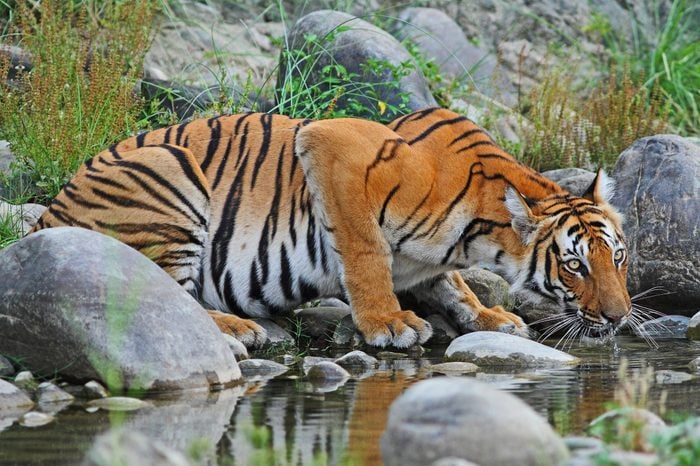
Bengal Tiger (Panthera tigris tigris)
These days found mostly in India—although there are some in China, Bangladesh, and Nepal as well—the Bengal tiger is the only tiger that exists, not only with classic black stripes over orange fur but also in a white iteration. Males can grow to ten feet long and 550 pounds, and they have thrived in the past in both dry and wet deciduous forests, grasslands, and mangrove forests, according to WWF.
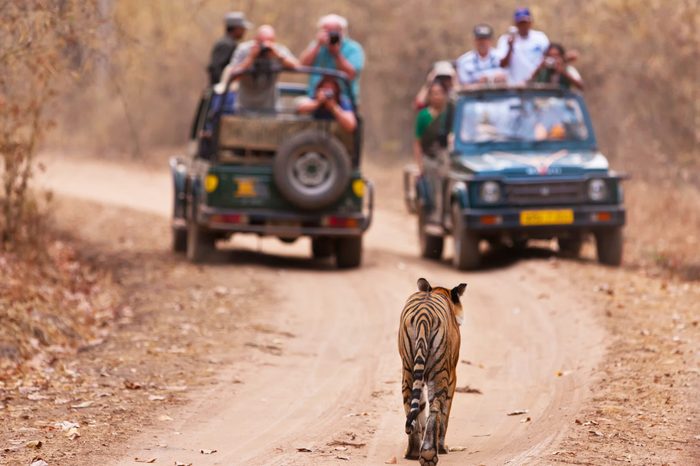
How many Bengal tigers are left in the world?
Bengal tigers are actually the most populous of all the remaining tiger subspecies, with numbers estimated to be at around 2,500 individuals in the wild. Nevertheless, they face the same, increasingly common, challenges—namely, poaching (their coats and various body parts, like bones, are still, unfortunately, highly prized in some international markets), and habitat loss. India has created preserves to help stabilize their numbers, reports Animal Planet, but they remained listed as Endangered. Other animals of the Indian subcontinent, including elephants, are also in trouble.
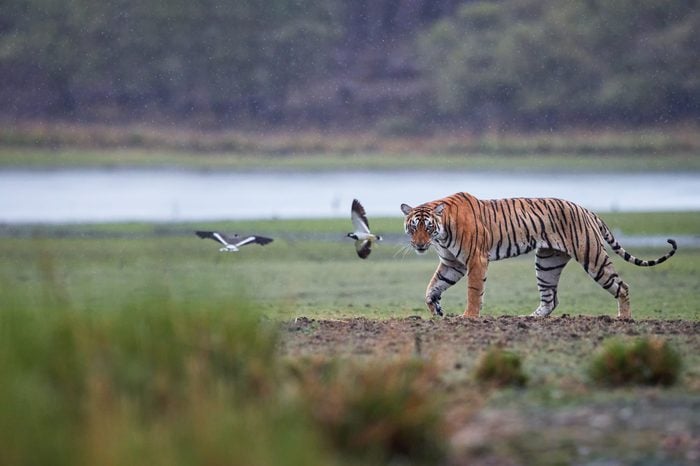
Bengal tigers in danger
At least one population of Bengal tigers, in Bangladesh, is facing an even harsher reality brought about by climate change. As the New York Times reports, sea level rise and intense flooding are leading not only to loss of critically necessary habitat but a change in vegetation that may have calamitous effects on the food web that supports predator tigers and all other animals on down the food chain.
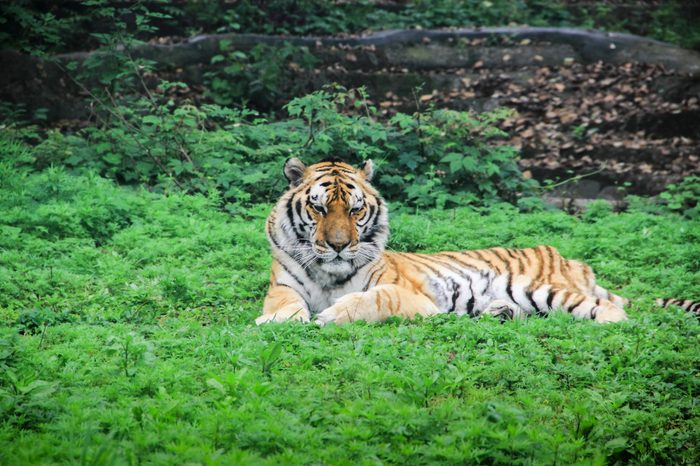
South China Tiger (Panthera tigris amoyensis)
Although listed as critically endangered since 1996, an IUCN reassessment in 2008 of this tiger native to the forests of Hunan, Fujian, and several other regions of China, found that it is functionally extinct, with no individuals having been spotted in the wild for 25 years. It’s a trend that scientists fear will only increase with climate change; many animals have already gone extinct over the past 100 years. It’s been a rapid decline; reports WWF. Just how many tigers are left in the world? Four thousand South China tigers existed in 1950; it was “hunted as a pest” until its numbers plummeted and the Chinese government banned hunting in 1979. But 17 years later, only 30 to 80 individuals were thought to be left.
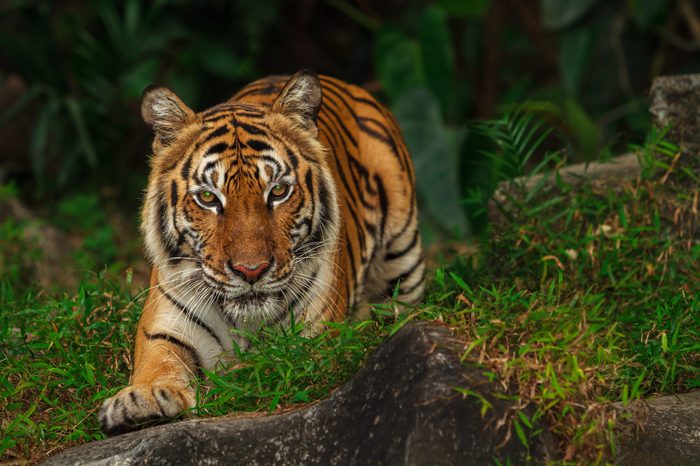
Indochinese Tiger (Panthera tigris corbetti)
Native to Southeast Asia, the Indochinese tiger has been known to exist in Myanmar, Thailand, Laos, Vietnam, Cambodia, and southwestern China. Smaller than a Bengal tiger, it nevertheless can grow to nearly nine feet long and over 500 pounds, feeding largely on the ungulates that populate its preferred tropical and subtropical forests. It’s also known to be particularly elusive, with less known about this subspecies than some others in the Panthera genus.

Indochinese tiger facts
Some groups of Indochinese tigers are doing somewhat better than others, although all populations are struggling; People Resources and Conservation reports that though they were widespread as recently as the 1980s, hunting has seen their numbers drop precipitously, by some 70 percent. As with other tiger subspecies, fragmenting habitat due to rapid development is also an increasingly tough challenge for these animals, which need to hunt over many miles in order to survive. Find out exactly how many cheetahs are left in the world.

How many Indochine tigers are left in the world?
WWF reports that in many of the places where listed-Endangered Indochinese tigers were once known to live, the cats have not been seen in some time. By their estimates, there are 250 individuals living on the Thailand-Myanmar border, with perhaps another 100 individuals spread out across its remaining range. The organization is looking at places where tigers bred in captivity might be reintroduced, such as the forests of Lower Mekong, Southern Laos, and Central Vietnam.
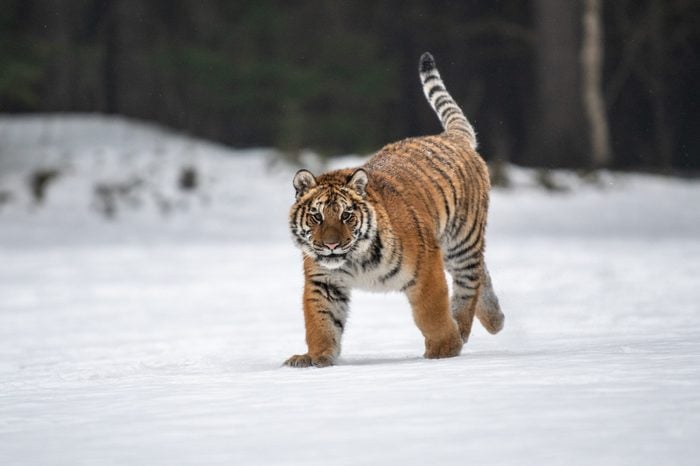
Siberian Tiger (Panthera tigris altaica)
Also known as Amur tigers, these cats that are native to the frigid regions of far eastern Russia, northern China, and Korea, “have the largest home range of any tiger subspecies because they have to search over large areas to find food due to low prey densities,” according to WWF. They are the largest of the tigers, and the largest of all the cats, with males weighing as much as 660 pounds.
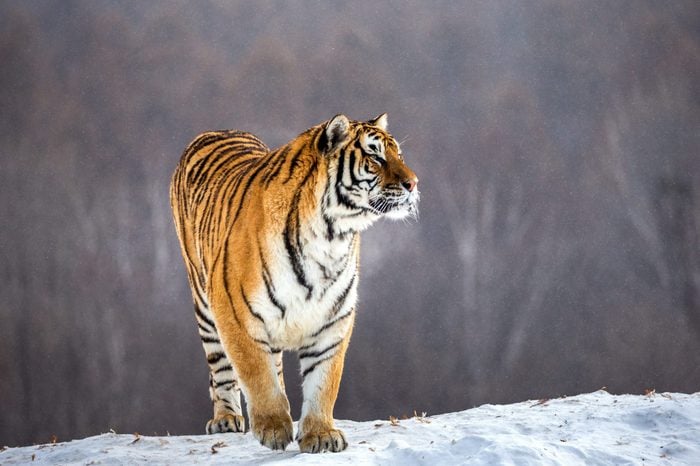
Siberian tiger facts
According to National Geographic, Siberian tigers have one advantage over the other subspecies: “Northern forests offer the lowest human density of any tiger habitat and the most complete ecosystem. The vast woodlands also allow tigers far more room to roam, as Russia’s timber industry is currently less extensive than that of many other countries.” Although they are listed as endangered, they are also, at least for the moment, considered stable.

How many Siberian tigers are left in the world?
Hunted practically to extinction in the 1940s, Russia eventually granted Siberian tigers full protection and in the 1980s, the population bounced back to around 500 individuals, although poaching continued. Today, it numbers around 540 individuals in the wild. Its habitat has been reduced to the “Sikhote-Alin range in the Primorski and Khabarovsk provinces of the Russian Far East, small pockets in the border areas of China and possibly in North Korea,” reports WWF. Still with conservation efforts, hopefully, the Siberian tigers can join the list of animals that came back from the brink of extinction.
